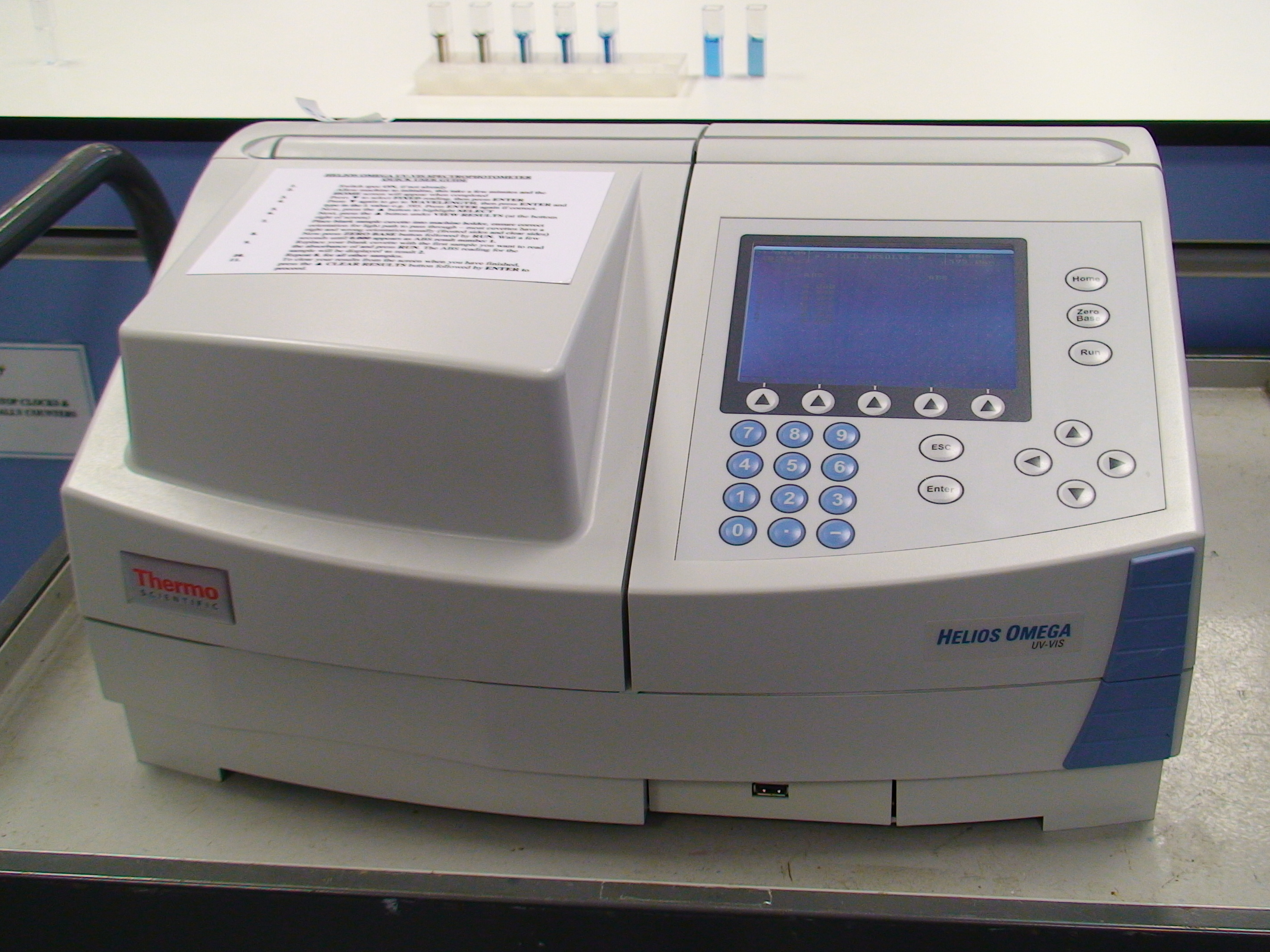OD600 on:
[Wikipedia]
[Google]
[Amazon]

 OD600 (Also written as ''O.D. 600'', D600, ''o.d. 600'', ''OD600'') is an abbreviation indicating the
OD600 (Also written as ''O.D. 600'', D600, ''o.d. 600'', ''OD600'') is an abbreviation indicating the

optical density
Absorbance is defined as "the logarithm of the ratio of incident to transmitted radiant power through a sample (excluding the effects on cell walls)". Alternatively, for samples which scatter light, absorbance may be defined as "the negative lo ...
of a sample measured at a wavelength
In physics, the wavelength is the spatial period of a periodic wave—the distance over which the wave's shape repeats.
It is the distance between consecutive corresponding points of the same phase on the wave, such as two adjacent crests, tro ...
of 600 nm in 1 cm light path (unless otherwise stated). It is a commonly used in microbiology
Microbiology () is the scientific study of microorganisms, those being unicellular (single cell), multicellular (cell colony), or acellular (lacking cells). Microbiology encompasses numerous sub-disciplines including virology, bacteriology, prot ...
for estimating the concentration
In chemistry, concentration is the abundance of a constituent divided by the total volume of a mixture. Several types of mathematical description can be distinguished: '' mass concentration'', ''molar concentration'', ''number concentration'', an ...
of bacteria
Bacteria (; singular: bacterium) are ubiquitous, mostly free-living organisms often consisting of one biological cell. They constitute a large domain of prokaryotic microorganisms. Typically a few micrometres in length, bacteria were among ...
or other cells in a liquid as the 600 nm wavelength does little to damage or hinder their growth. OD600 is a type of turbidity measurement. Since optical density in case of OD600 measurements results from light scattering by particles
Light scattering by particles is the process by which small particles (e.g. ice crystals, dust, atmospheric particulates, cosmic dust, and blood cells) light scattering, scatter light causing optical phenomena such as the Rayleigh scattering, blue ...
(cells) rather than absorption
Absorption may refer to:
Chemistry and biology
* Absorption (biology), digestion
**Absorption (small intestine)
*Absorption (chemistry), diffusion of particles of gas or liquid into liquid or solid materials
*Absorption (skin), a route by which ...
, size and shape as well as dead cells and debris of a cell may add to light dissipating. Distinctive cell types that are at densities of the same level (eg. cell/mL), may, therefore, show varying values OD600, when estimated on a similar instrument.
For turbid samples such as cell cultures, the major contributor for the optical density measured is light scattering and not the result of molecular absorption
Absorption may refer to:
Chemistry and biology
* Absorption (biology), digestion
**Absorption (small intestine)
*Absorption (chemistry), diffusion of particles of gas or liquid into liquid or solid materials
*Absorption (skin), a route by which ...
following the Beer-Lambert Law. The measurements are therefore depending on the optical setup of the spectrophotometer (distance between the cell holder and instrument exit slit, monochromator optics, slit geometry, etc.), different instrument types will most likely tend to give different OD600 readings for the same turbid sample.
Measuring the change of the OD600 as a function of time (e.g. measuring of the growth curve) may indicate the growth phase of cultured cell population, i.e. whether it is in the lag phase, log phase, or stationary phase.Mandelstam J, McQuillen K, Dawes I (eds): Biochemistry of Bacterial Growth. 3rd Ed. Blackwell, Oxford, 1982 . For protein expression and purification in bacteria it is recommended that protein induction and cell harvesting should be done at specific OD600 (usually at the end of the log phase, OD600 = 0.4).
OD600 is preferable to UV spectroscopy
Ultraviolet (UV) is a form of electromagnetic radiation with wavelength from 10 nm (with a corresponding frequency around 30 PHz) to 400 nm (750 THz), shorter than that of visible light, but longer than X-rays. UV radiation i ...
when measuring the growth over time of a cell population because at this wavelength, the cells will not be killed as they would under too much UV radiation. UV radiation has also been shown to cause small to medium-sized mutation
In biology, a mutation is an alteration in the nucleic acid sequence of the genome of an organism, virus, or extrachromosomal DNA. Viral genomes contain either DNA or RNA. Mutations result from errors during DNA or viral replication, mi ...
s in bacteria, potentially altering or destroying gene
In biology, the word gene (from , ; "...Wilhelm Johannsen coined the word gene to describe the Mendelian units of heredity..." meaning ''generation'' or ''birth'' or ''gender'') can have several different meanings. The Mendelian gene is a ba ...
s of interest.
References